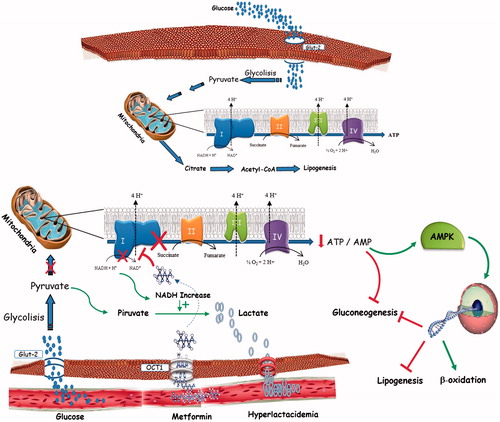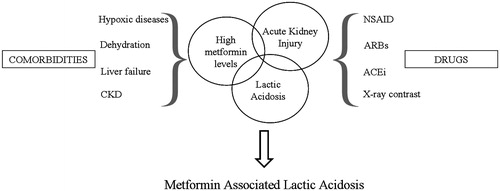Figures & data
Figure 1. Lactate metabolism in physiological condition and in MALA patients.MALA may be attributed to mitochondrial impairment and subsequent generation of lactate, which finally effluxes into the circulation rather than being oxidized further.Metformin raises lactic acid levels by affecting the redox potential and promoting anaerobic metabolism, leading to a decrease in the ATP:ADP ratio and an increase in the NADH:NAD ratio. This can result in an accumulation of pyruvate (by inhibition of pyruvate dehydrogenase) that is later converted into lactate.


